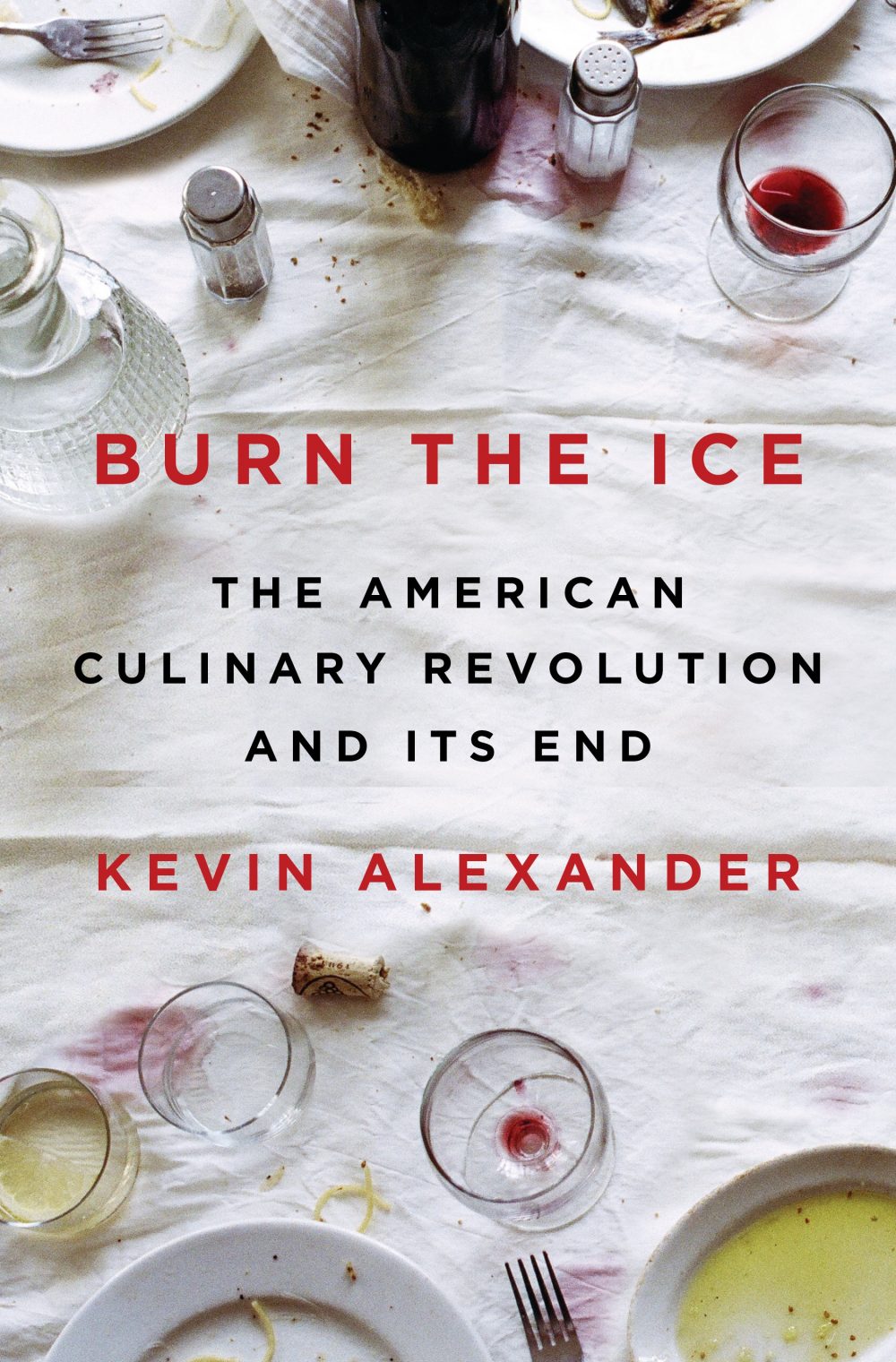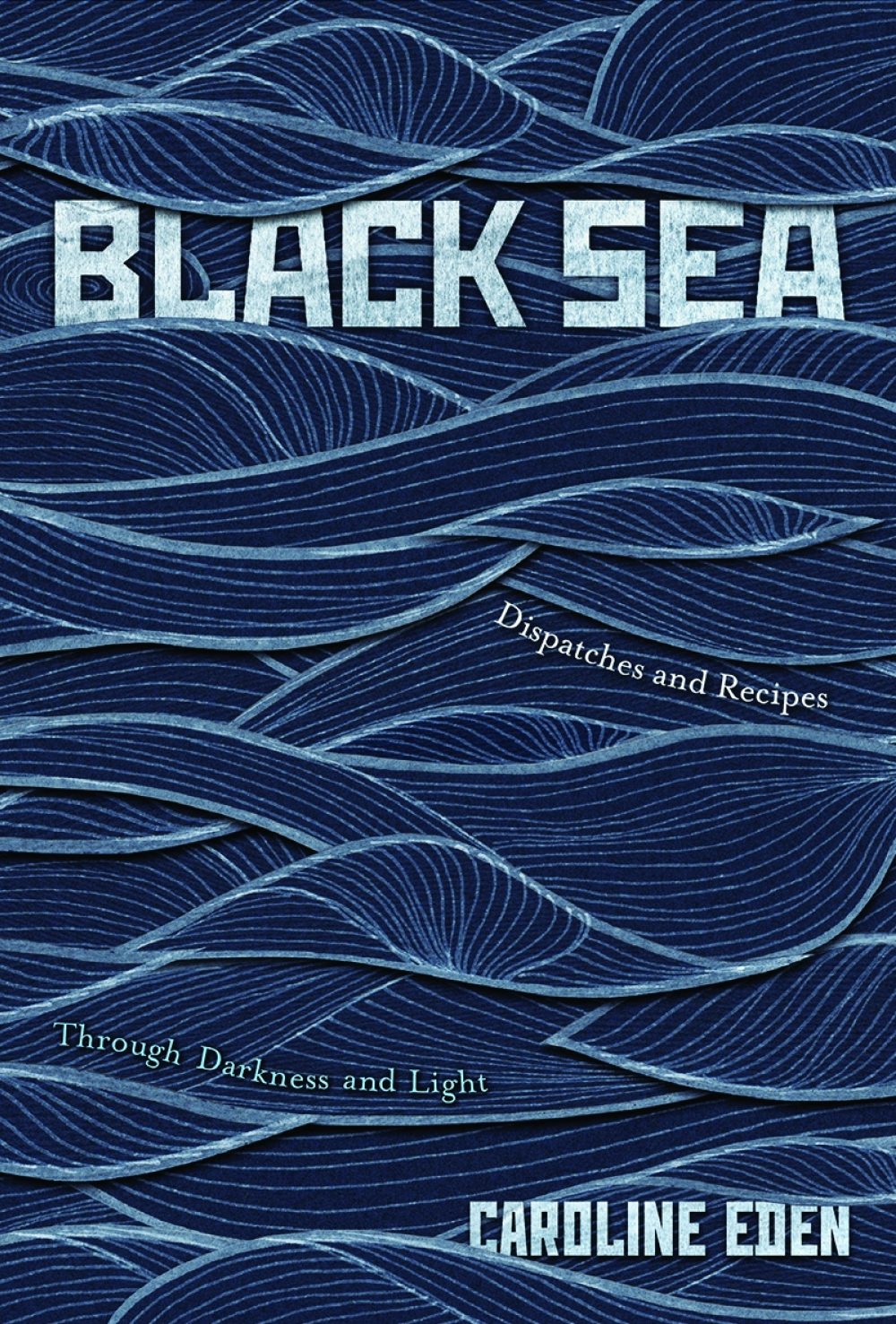
Burn The Ice
By Kevin Alexander
According to Alexander, the (second) American culinary revolution began in 2006 and ended in 2016. This was the American culinary diaspora, mostly outside of New York and San Francisco, towns such as Portland, Oregon and restaurants such as Clarkelewis where Gabriel Rucker promoted cheap, eclectic surroundings (e.g. no tablecloths and mismatched chairs) plus high quality local foodstuffs. (Clarklewis also had an infamous wood-fired hearth without proper ventilation which created a smoke cloud so thick that diners often sent the restaurant their dry cleaning bills.) Other heroes of this second revolution include Anjan Mitra who opened Dosa on New York’s East 6th street in 2005, Prince’s Hot Chicken Shack in Nashville, the new wave craft cocktail bars including Death and Company (the Lilywacker, the Myra Breckinridge and the Oaxaca Old Fashioned), Roy Choi’s Korean BBQ taco truck, Guy Fieri whose hippie parents sold candles and who manned a soft pretzel cart when he was 10, and Tom Colicchio who was the driving force behind Top Chef, a show that was really and truly about cooking, not just theater. A series of chef and restaurant profiles, Burn TheIceis a bit of a historical hodge-podge trying to impress a philosophical theme on culinary chaos: Guy Fieri and Tom Colicchio exist at different ends of the food universe. Yet the story is a compelling; the original American food revolution traveled across America, to towns large and small, and was no longer owned and operated by a small cabal of elites. This was a game that anyone with talent, drive and a bit of sweat-equity could play. Alexander closes this chapter of the American revolution with a warning about the future: the restaurant business is a victim of its own success with unsustainable costs, hard to find labor, and saturation of the artisanal farm-to-table narrative. Like with all revolutions, be careful what you wish for.
The Black Sea, according to Caroline Eden, is a “salty stockpile of dead civilizations.” It is also the final dumping ground of the Danube, the setting for Jason and The Argonauts, and a sea that is bordered by the Ukraine, Bulgaria, Turkey and Russia. Located on the northwest corner of the Black Sea, Odessa was a bustling free port, with hundreds of trading ships anchored at one time. The Passage Hotel had a Fabergé shop, a tribute to the concentration of wealth, and the trompe d’oeil staircase leading to the docks was featured in the famous baby carriage scene from Battleship Potemkin. Eden arrives in modern-day Odessa and finds a collective malady of decay and melancholy that ebbs and flows. She also found gobies, small fried fish, rapany, giant sea snails, and forshmak, herring and apple served cold. In Istanbul, Eden reports that White Russians and even one Grand Duchess ended up working at famous restaurants. She befriended the “last fisherwoman of Bulgaria;” after her husband died she had to support her family piloting a fishing boat in what can be a perilous sea. She found places untouched by time, wild gypsy villages and landscapes that harken back to Bram Stoker’s Dracula. (Varna, Bulgaria was where Dracula’s coffin was loaded onto the ship bound for England.) Eden also found samardala, a garlic honey nectar, flavored salts, sour soups, breakfast polenta with mushrooms and hazelnuts, zelnickpiewith chard, spinach, mint and feta, monastery soup, constanta, breakfast breads filled with apricot, and Italian specialties such as polpettesince Italians were among Odessa’s immigrants. If you have already gorged on the cooking of Italy, France, Morocco, Mexico, China, and India, it may be time to take a fresh look at the Black Sea. Caroline Eden thinks that its time is at hand.

Black Sea
By Caroline Eden
Vegetables Unleashed
By José Andrés
Jose Andres owns 31 restaurants that often marry disparate cuisines from Chinese and Mexican to Peruvian and Chifa, feeds millions of people through his World Central Kitchen (including 3.5 million meals in Puerto Rico after the hurricane), and now has turned his attention to vegetables, point out that there are 420 calories from $1 of soda but just 39 in $1 of broccoli and that 42% of American do not regularly consume fresh produce. He will tell you that tasting a fresh piece of pineapple is a gift that keeps on giving – juicy and fresh from the first bite to the last whereas a steak is a less wondrous experience. As he says, “vegetables offer a mystery that lingers long after you stop chewing.” Point taken. In Vegetables Unleashed, Jose turns vegetables sexy, makes them the center of the plate either by cooking them in water and a few simple ingredients so they create their own sauce in the skillet or by roasting compost potatoes (vegetables almost ready for the trash) and turning them into something delicious. He cooks with vegetables juices, believes in slow-cooked well-done vegetables for a change of pace, makes an avocado milkshake, and prefers a “beefsteak” sandwich to a hamburger. There are corn soup and corn cakes, grilled spring onions, whole roasted cauliflower, and a beet “poke” bowl. He believes in the power of food – every bite can change the world – but he doesn’t believe in slogans such as “locavore.” As he points out, not buying mangoes from Haiti may result in a boatload of Haitian immigrants in Key West. But, most of all José is a cook. He saves mushroom trimmings for stock, cooks broccoli stems with olive oil, garlic and dried chile, and keeps citrus peel for gin and tonics. Spend your life wisely, I hear him say. Don’t waste a thing.



